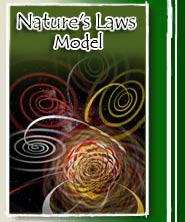 Heritage Community Foundation Presents
Heritage Community Foundation PresentsAlberta Online Encyclopedia
|
|
|
|
|
 |
|||
 
|
Home | About | Contact Us | Partners | Sitemap |
|
|
|
|
|||
|
Home>> |
|
||
|
Nature's Laws |

|
||
|
Laws may be written or unwritten. The Constitution of Britain, for example, is not written. In Canada, some laws are statutory, others are "Common Law." The laws of Indigenous Peoples around the world are often referred to as "Nature’s Laws." The spiritual dimension of existence is always operative in First Nations' culture. Spiritual concepts were expressed in terms of "truths" or "laws" and people were expected to act according to these laws in every aspect of their daily life. In other words, the laws were meant to be "lived," rather than “obeyed." Such "living-out" of Nature's Law promoted a balanced, healthy and well-rounded community. Today, numerous First Nations peoples have moved away from Nature’s Laws and live totally according to laws of the dominant society. Others live by both systems of law. Still others are attempting to move back into Nature’s Laws. A similar situation exists for persons whose ancestry includes both Indigenous and European cultures, Métis people, for example. Nature’s Laws are highly interwoven and, like nature itself, a holistic entity incapable of being divided. Nonetheless, it is possible to view this holistic entity from different angles, or through different "lenses," in order to see special dimensions and relationships. Eight of these “lenses” through which Indigenous Understandings of Nature’s Laws can be more clearly seen, that is, the Categories of Nature's Laws, are presented on the website in separate sections as follows:
Featured Article: Speech by the Most Honourable Antonio Lamer, PC, CC, CD, LLD, DU. September 26, 2002. |
|||
 |
Copyright © 2004 Heritage Community Foundation , Chief Wayne Roan and Earle Waugh, PhD. All Rights Reserved |
 |
|
 |
|||
For more on Aboriginal views of governance, visit Peel’s Prairie Provinces.
